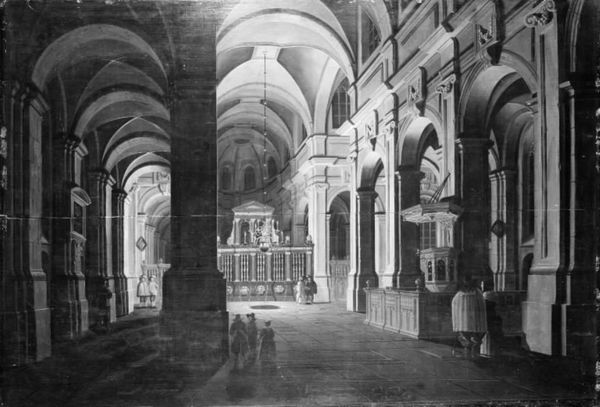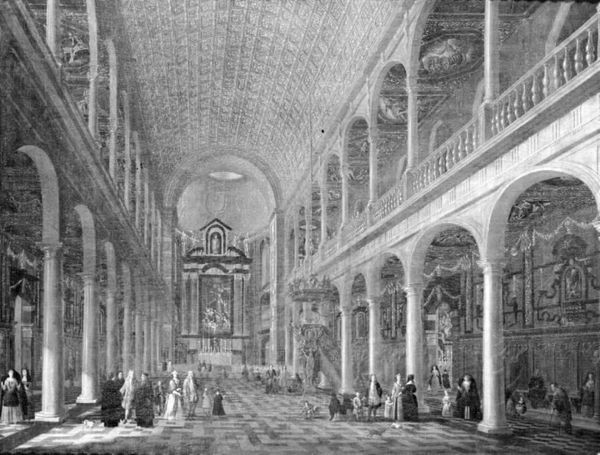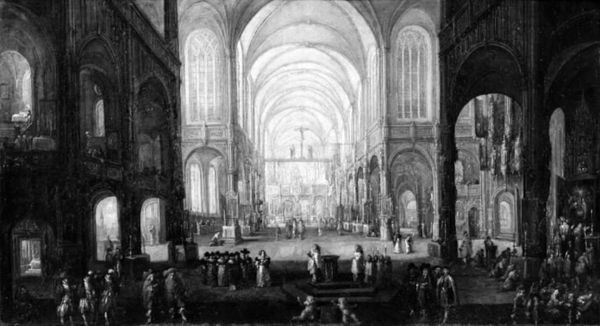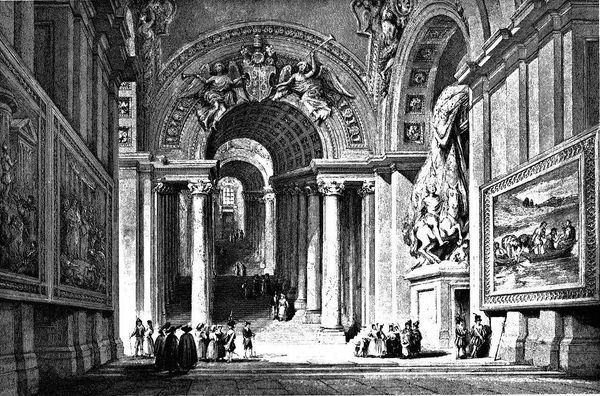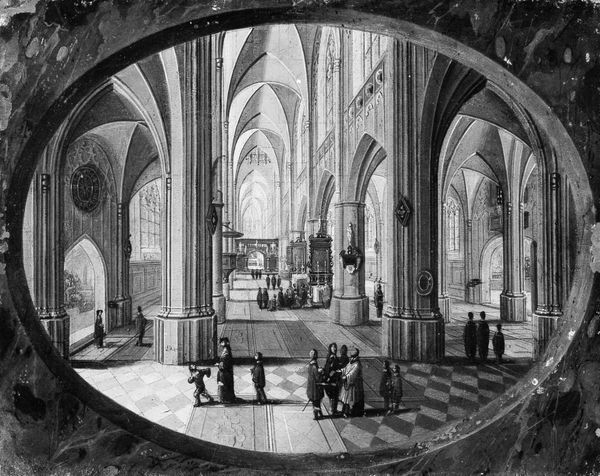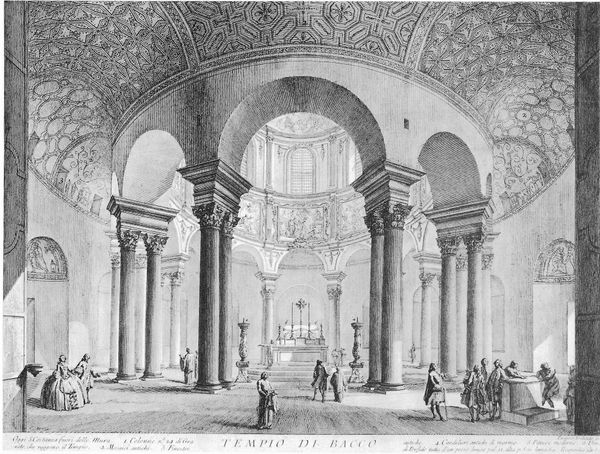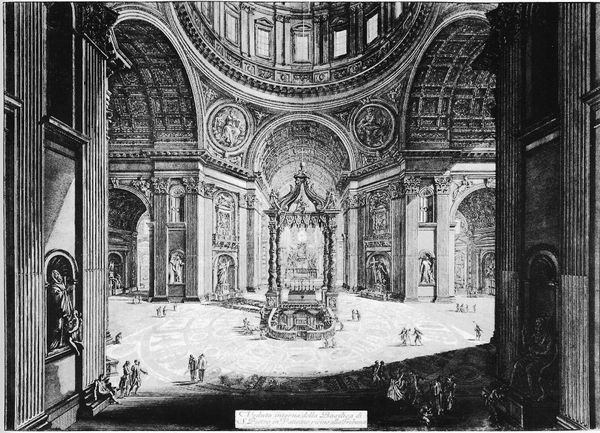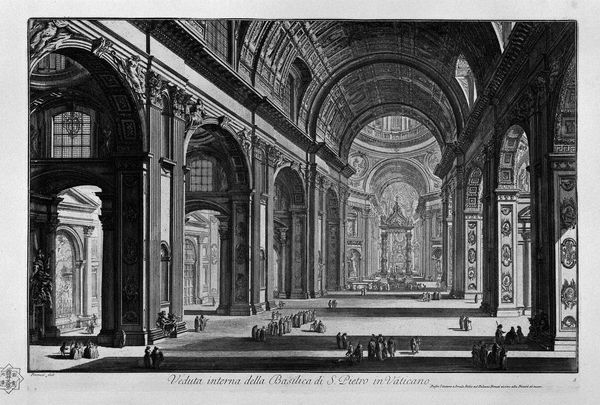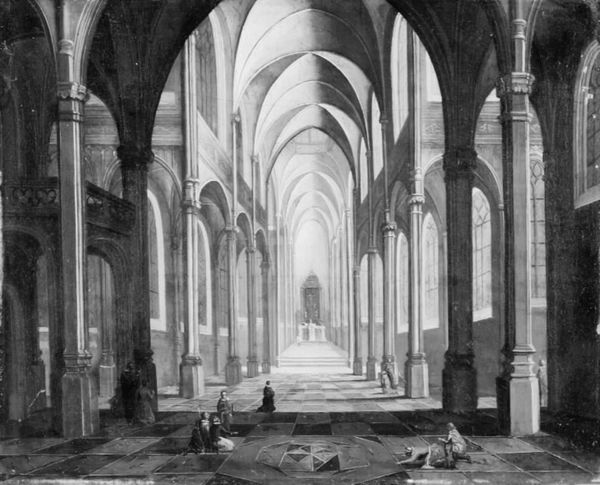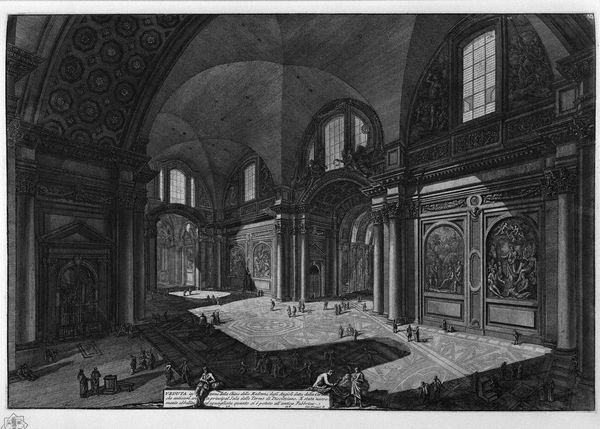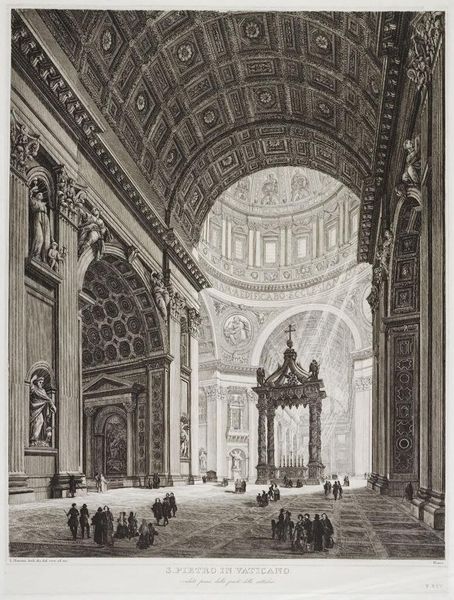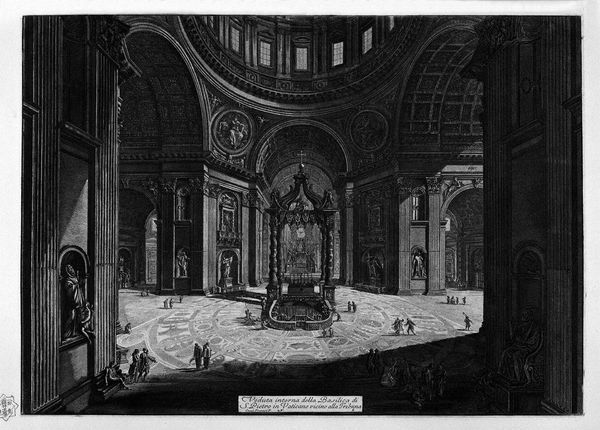
painting, oil-paint, canvas, architecture
#
baroque
#
building
#
painting
#
oil-paint
#
perspective
#
figuration
#
canvas
#
genre-painting
#
architecture
Dimensions: 71.5 cm (height) x 91.5 cm (width) (Netto)
Curator: Jacob Balthasar Peeters created this piece, "Interior of a Catholic Church," in 1714. It is an oil painting on canvas, currently held at the SMK, the National Gallery of Denmark. Editor: The perspective in this piece really pulls me in. The high ceilings and long rows of columns create an amazing sense of space and depth, despite the rather limited tonal range. Curator: Absolutely. It’s a fascinating genre painting, showcasing the baroque style and employing complex architectural rendering. Peeters’s attention to detail extends not only to the architecture itself, but also to the individuals populating the scene. You can discern their clothing, postures, and interactions. Consider, for instance, the materials involved; the pigments used for the illusion of marble, the texture of the canvas supporting it. The canvas, likely produced by specialized weavers and then primed, represents an entire industry supporting the creation of "high" art. Editor: That checkerboard floor is masterfully done! It so strongly suggests receding space through variations in its shapes and values, even given the limitations of working in monochrome. But what does it all mean? Does the perspective device lead to the divine, or something else entirely? Curator: The use of perspective here does a great job reinforcing a sense of order, very important for this time in history, in sacred spaces like this. I would argue that Peeters is also exploring the burgeoning societal structures present in that time as reflected in religious architecture, its construction, funding, and ultimate influence. These spaces required countless artisans and laborers to manifest. Consider how that labour shapes the visual aesthetic. Editor: True. Thinking about form again, note how the architectural elements – the arches, columns, even the placement of figures – all serve to create a balanced, harmonious composition. There's this really interesting play between horizontal and vertical lines that gives it stability but also dynamism. Curator: Indeed. And that dynamism extends beyond the formal elements. The figures themselves are not static; they engage in conversation, prayer, contemplation. Each contributes to the atmosphere, a microcosm of daily life unfolding within a sacred context, constructed via a great collective of effort and trade. Editor: Looking closely, it is fascinating how the artist's choice of tone creates these effects. Even limited to these tones, the textures come alive, the architecture breathes. This play with structure and substance creates the whole illusion! Curator: Yes. By viewing the work through these lenses, we hopefully reveal much more about the conditions and resources required to bring a single painting like this into existence. Editor: I agree. Breaking it down this way makes one think about how this church became what it is, and that Peeters invites us to consider our understanding of buildings through artistic composition.
Comments
No comments
Be the first to comment and join the conversation on the ultimate creative platform.
